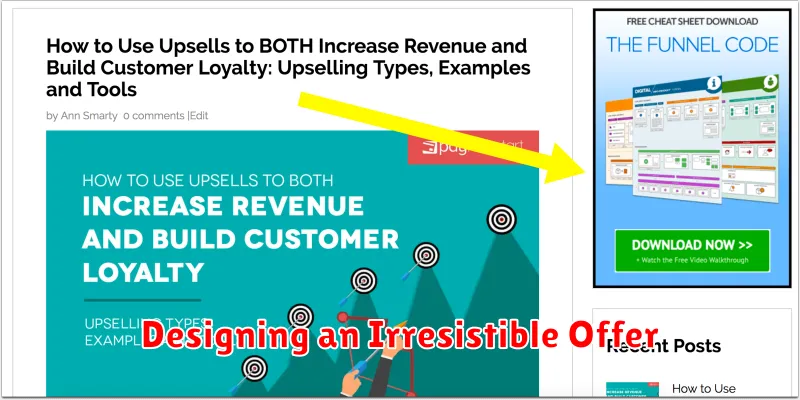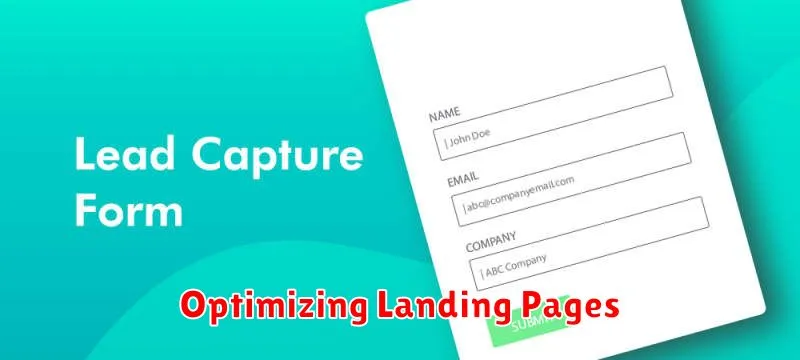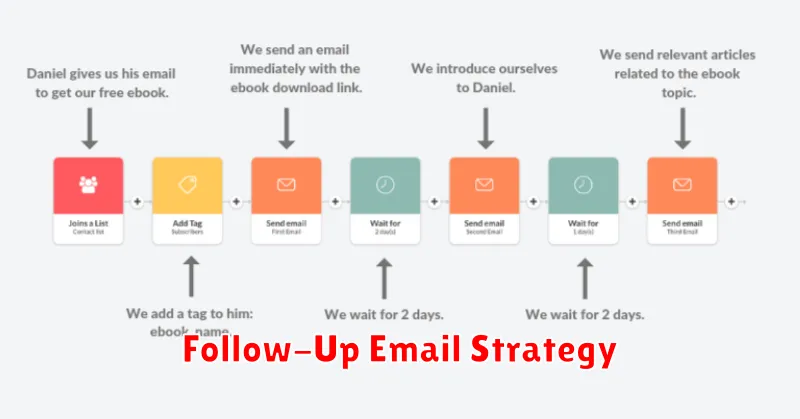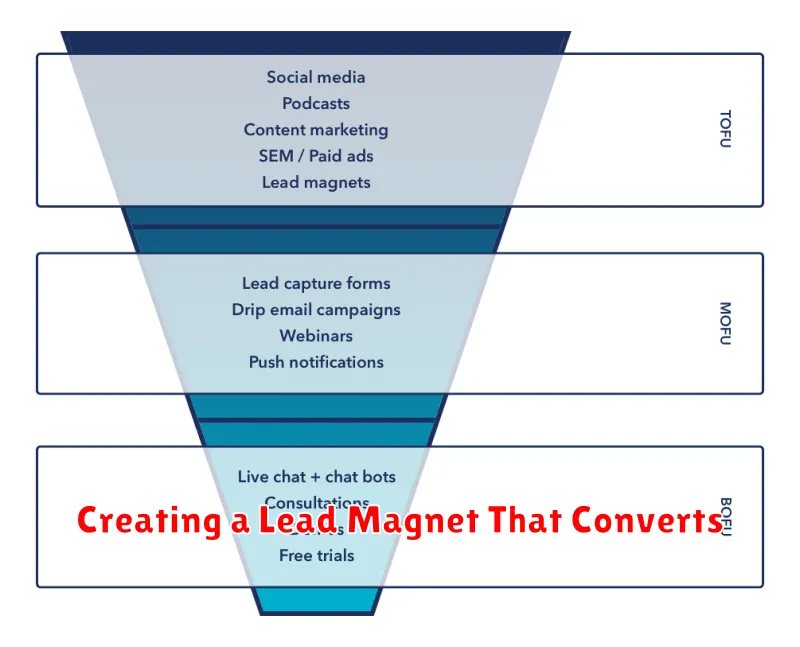In today’s digital marketing landscape, generating high-quality leads is paramount to business success. A lead magnet serves as a powerful tool for attracting and capturing the contact information of potential customers. Creating a high-converting lead magnet, however, requires careful planning and execution. This article will delve into the essential strategies for developing a lead magnet that not only attracts potential leads but also effectively converts them into paying customers. We will explore various types of lead magnets, including ebooks, checklists, webinars, and templates, and discuss how to tailor your lead magnet to your target audience’s specific needs and pain points. By optimizing your lead magnet for conversions, you can significantly enhance your lead generation efforts and drive business growth.
A well-crafted lead magnet is more than just a freebie; it’s a strategic asset that provides genuine value to your audience while simultaneously furthering your business objectives. This article will guide you through the process of creating a lead magnet that converts by focusing on key elements such as compelling content, a clear call to action, and strategic promotion. Learn how to craft a lead magnet that effectively captures leads, nurtures them through the sales funnel, and ultimately contributes to increased conversions and revenue. By implementing the tactics outlined in this article, you can transform your lead magnet from a simple lead capture tool into a powerful engine for business growth and customer acquisition.
What is a Lead Magnet?
A lead magnet is a valuable piece of content offered for free in exchange for a prospect’s contact information, typically their email address. It’s a crucial element in inbound marketing, used to attract potential customers and nurture them through the sales funnel.
The purpose of a lead magnet is to provide immediate value to your target audience while simultaneously capturing leads for future marketing efforts. This exchange establishes a connection and positions you as a trusted resource.
Effective lead magnets address a specific pain point or provide a desirable solution for your ideal customer. They are designed to be easily consumable and highly relevant to the audience’s needs.
Examples of lead magnets include:
- Ebooks
- Checklists
- Templates
- Webinars
- Discount Codes
Choosing the Right Format
Selecting the appropriate format for your lead magnet is crucial for its success. The format should align with your target audience’s preferences and the type of content being offered.
Consider these popular and effective lead magnet formats:
- Ebooks and Guides: Ideal for in-depth content, providing comprehensive information on a specific topic.
- Checklists and Worksheets: Actionable and practical resources that help users implement learnings.
- Templates and Spreadsheets: Provide a framework for users to organize information and complete tasks efficiently.
- Webinars and Online Courses: Offer a more interactive learning experience, engaging audiences in real-time.
- Reports and White Papers: Data-driven content showcasing research and insights relevant to industry trends.
Key factors to consider when making your decision include the complexity of the information, the time commitment required from the audience, and the overall goal of your lead magnet.
Designing an Irresistible Offer

A compelling lead magnet hinges on a well-designed offer. This means understanding your target audience’s pain points and offering a solution that provides genuine value.
Consider what information would be truly beneficial to your ideal customer. Is it a checklist, a template, a discount code, or perhaps access to exclusive content? The format should align with the information being delivered and be easily consumable.
Specificity is key. A vague offer won’t entice potential leads. Clearly articulate the benefits they’ll receive by opting in. For example, instead of offering a generic “marketing guide,” offer a “Checklist: 5 Steps to Optimize Your Social Media Marketing for Increased Engagement.”
Finally, ensure your offer is easily accessible. A complicated opt-in process can deter even the most interested prospects. Keep the form short and the download process seamless.
Optimizing Landing Pages

A high-converting landing page is crucial for maximizing the effectiveness of your lead magnet. It’s the bridge between clicking an ad or link and actually acquiring the offer. Every element should be optimized to encourage visitors to provide their information.
Headline: A compelling headline is the first thing visitors see. It should clearly communicate the value proposition of your lead magnet.
Concise Copy: Briefly explain the benefits of downloading your lead magnet. Focus on how it solves a specific problem for your target audience.
Form Optimization: Only ask for essential information. Shorter forms tend to convert better. Consider using a progressive form if you need more data.
Call to Action (CTA): Use a clear and actionable CTA button. The text should create a sense of urgency and clearly state what happens after clicking.
Mobile Responsiveness: Ensure your landing page displays correctly on all devices, from desktops to smartphones. A seamless mobile experience is crucial for maximizing conversions.
Follow-Up Email Strategy

A strong follow-up email strategy is crucial for maximizing your lead magnet’s conversion rate. After a lead downloads your magnet, a well-timed email sequence can nurture them further down the sales funnel. This involves sending a series of targeted emails that provide value, build trust, and ultimately encourage conversion.
Immediately after the download, send a thank you email containing the promised lead magnet. This confirms successful delivery and sets a positive first impression.
Subsequent emails should focus on providing additional valuable content related to the lead magnet’s topic. This could include blog posts, case studies, or exclusive offers. By consistently delivering value, you position yourself as a trustworthy source of information and build a stronger relationship with your leads.
Timing is key. Don’t bombard your leads with emails, but don’t let them forget about you either. A consistent schedule, such as one email every few days or once a week, can be effective.

